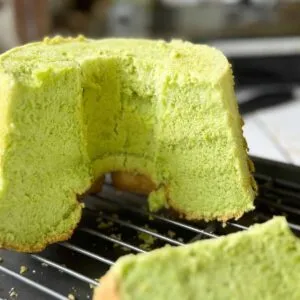Bánh Bò Nướng Đường Thốt Nốt – Vietnamese baked palm sugar honeycomb cake – chewy, bouncy, and bursting with caramel-coconut flavor. Outshining even the classic pandan version, one bite and you’ll be hooked!
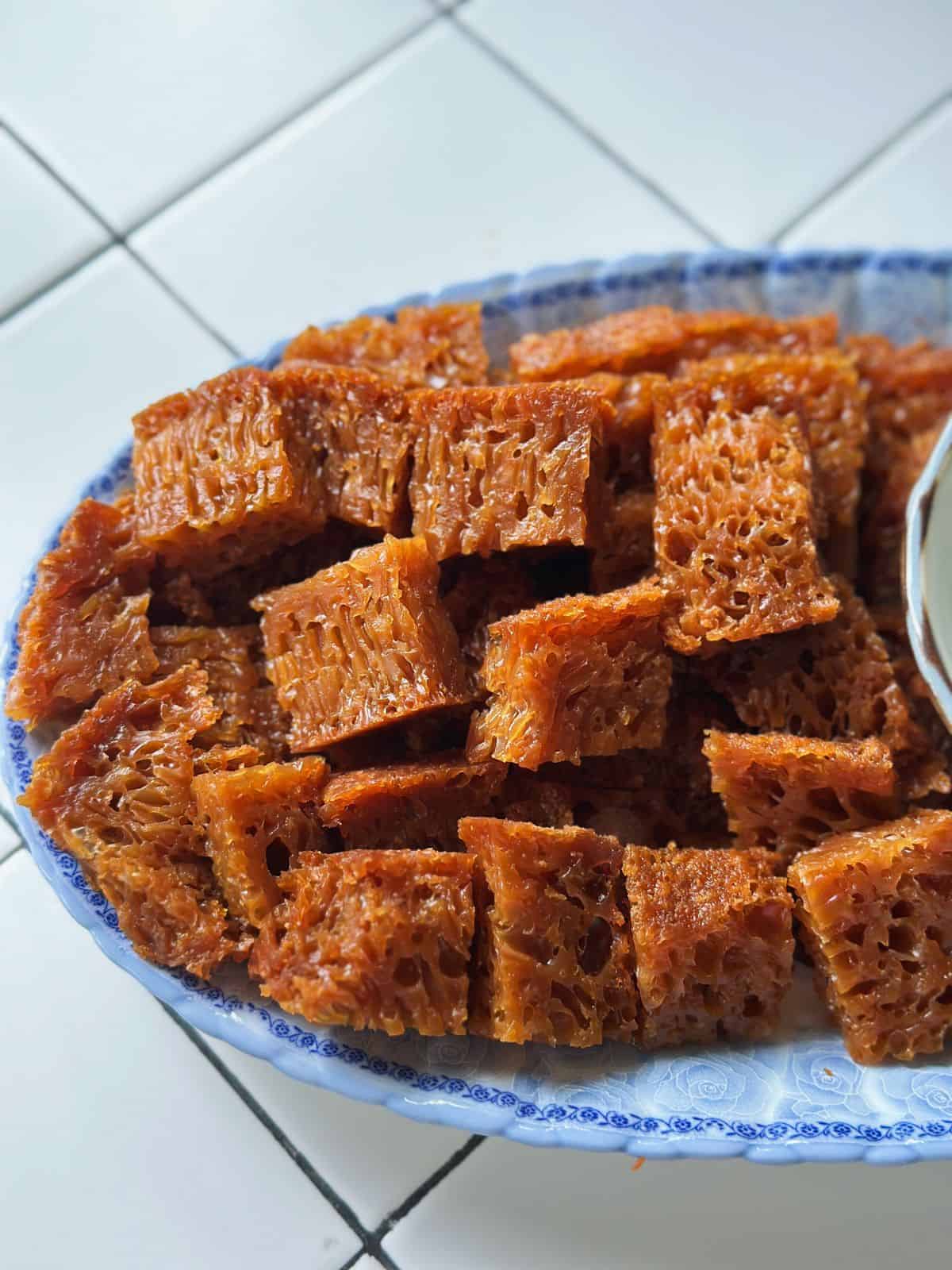
Vietnam’s Love for All Things Chewy
If you’re in a hurry and just want to get cooking, feel free to jump into the recipe card.
If there’s one texture we Vietnamese can’t resist, it’s chewy—springy, bouncy, and just fun to eat.

Walk through any Vietnamese food scene and you’ll notice it everywhere: the juicy, bouncy Bò Viên (beef meatballs), melt-in-your-mouth tendon in Phở, or the firm bite of headcheese in a Bánh Mì. Then there’s the delicate chew of Bánh Bột Lọc (tapioca dumplings) and even the slightly rubbery, yet satisfying, chicken skin in Phở Gà or Miến Gà.
Desserts are no different. From the soft bounce of Bánh Bò Hấp (steamed honeycomb cake) to the squishy Bánh Chuối Hấp (steamed banana cake) and layered Bánh Da Lợn, chewy textures take center stage. I’ll admit—it’s not everyone’s thing; my German boyfriend still looks puzzled every time I hand him a chewy Vietnamese treat!
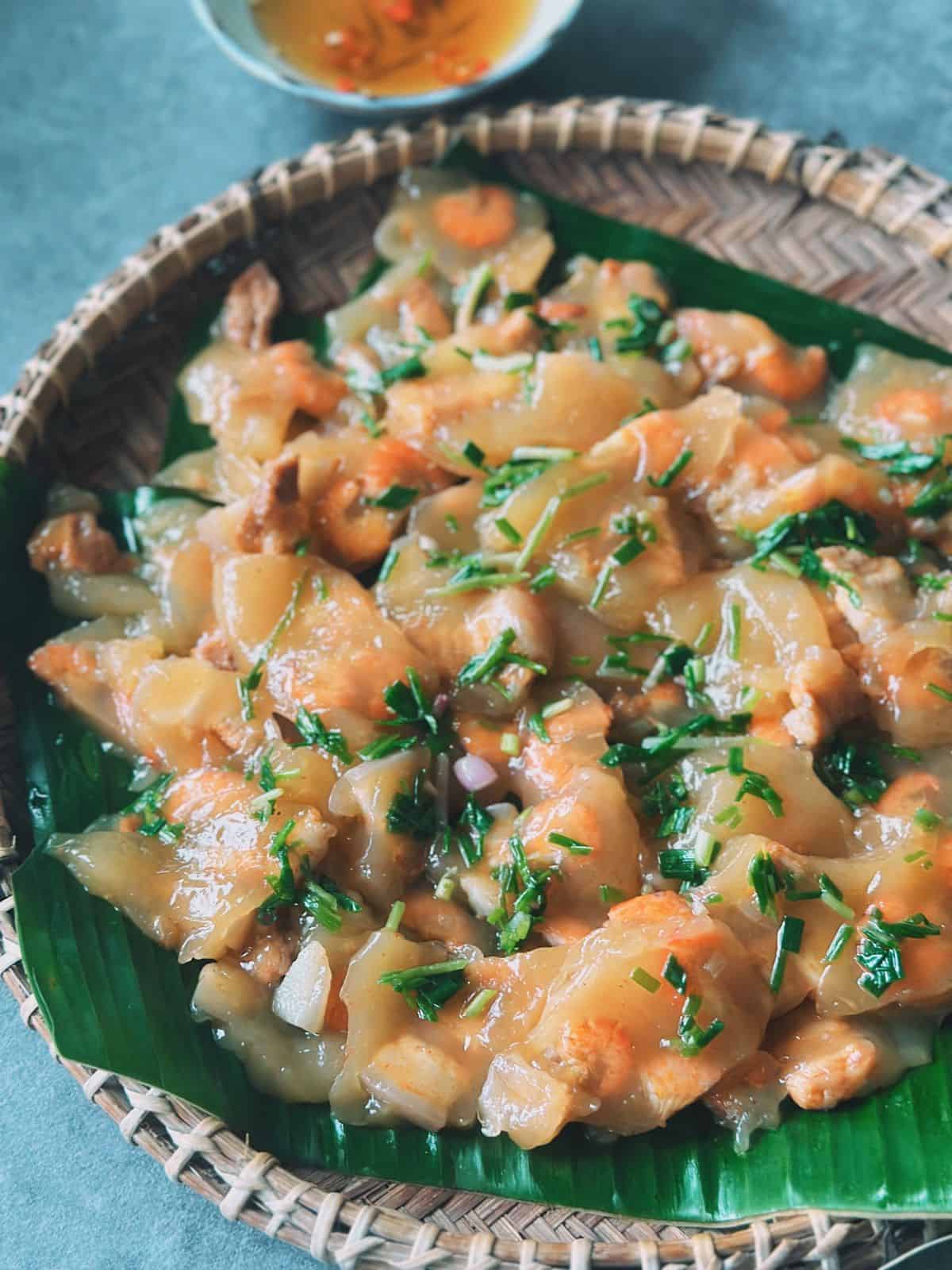



One newer favorite is Bánh Bò Nướng Đường Thốt Nốt, the palm sugar honeycomb cake. Inspired by Malaysia’s Kue Sarang Semut, it has a similar honeycomb look but with rich caramel-palm sugar flavor and a softer, less chewy bite. Of course, we gave it our own Vietnamese twist—and it’s been winning hearts ever since.

Ingredients
What makes the palm sugar honeycomb cake so beginner-friendly?
It uses both baking powder and baking soda to rise—much more forgiving than the pandan version, which relies on just baking powder. (Don’t worry, I’ve also got foolproof recipes for pandan honeycomb cake and ube honeycomb cake!)
- Eggs (Size L)
- Palm Sugar: The star of the show! With its mellow sweetness and deep caramel-butterscotch vibe, palm sugar gives this cake its soul. It’s a staple in Southeast Asian kitchens, perfect for Chè (Vietnamese dessert soups) or even a killer Pad Thai. Go for the paste form if you can—it’s the gold standard. Blocks come second, while granulated is my last choice.
- Substitute options: Brown sugar, black sugar, coconut sugar, muscovado or jaggery.
- Coconut Milk: Full-fat all the way. It’s what makes the cake rich and luscious.
- Tapioca Starch: The secret weapon behind that signature chewy-bouncy texture.
- All-Purpose Flour: Keeps the cake tender, even the next day. For gluten-free version, swap with rice flour or just up the tapioca starch.
- Baking Powder & Baking Soda: This power duo is what creates that beautiful honeycomb structure.
- Coconut Oil (or Melted Butter)
- Salt: Just a pinch—because sweetness without balance is boring.
Instructions
Step 1: Mix eggs and coconut base.
Lightly beat the eggs. In a pot, heat palm sugar, salt, and coconut milk until smooth (don’t boil), then slowly whisk into the eggs. Let cool for 15 minutes.
Step 2: Preheat oven.
Set to 340°F (170°C), no fan, and turn off top heat if possible. Preheat for 15–20 minutes.
Step 3: Add dry ingredients.
Whisk in tapioca starch and flour, strain, then mix in baking powder, baking soda, and coconut oil. Strain again for a smooth batter.
Step 4: Prepare mold and bake.
Grease the mold, pour in batter, cover with foil if needed. Bake 15 min at 340°F (170°C) → 30 min at 265°F (130°C) → uncover and bake 15 min more.
Step 5: Cool and unmold.
Let the cake cool completely in the mold before removing to avoid tearing.
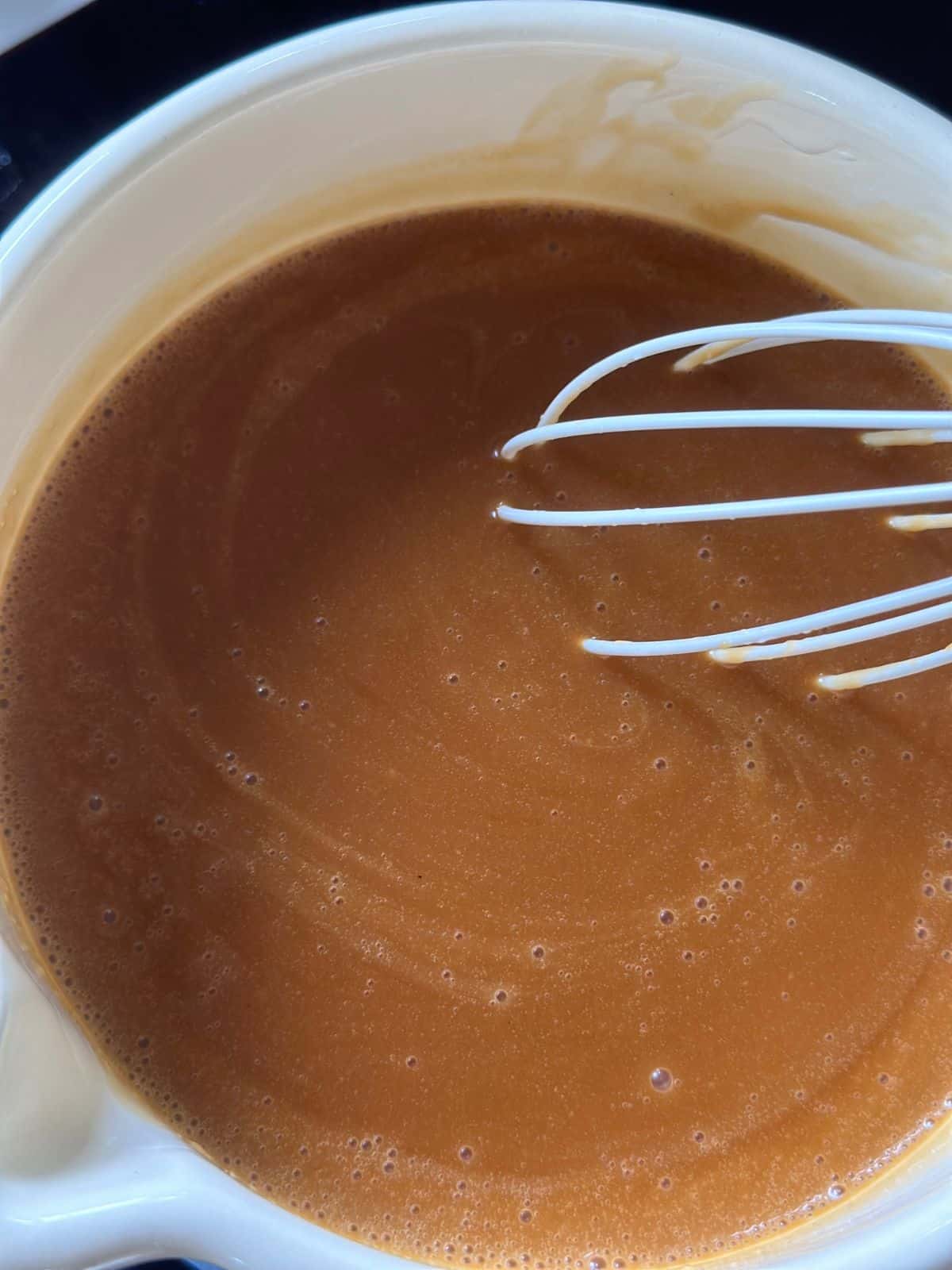
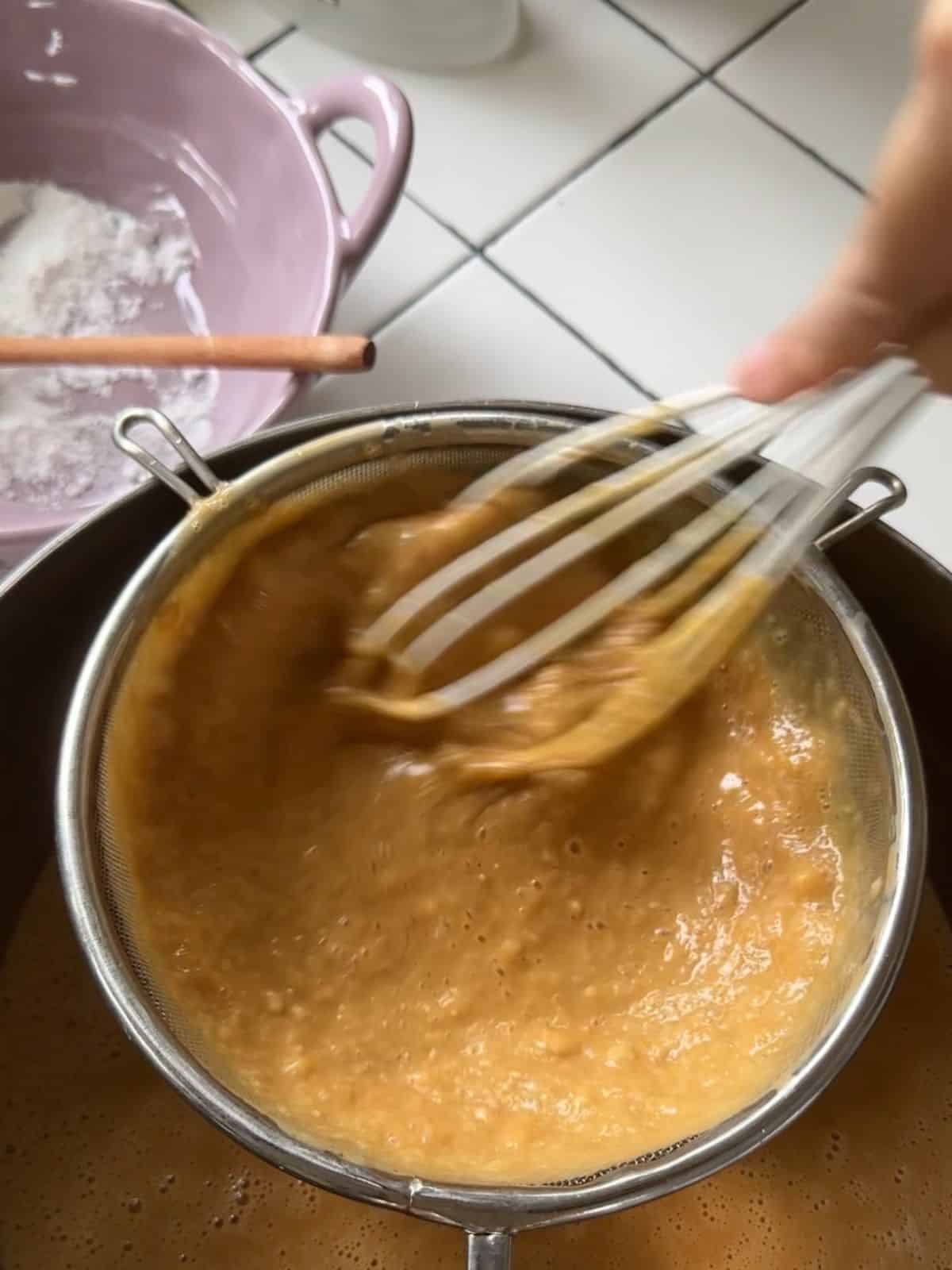
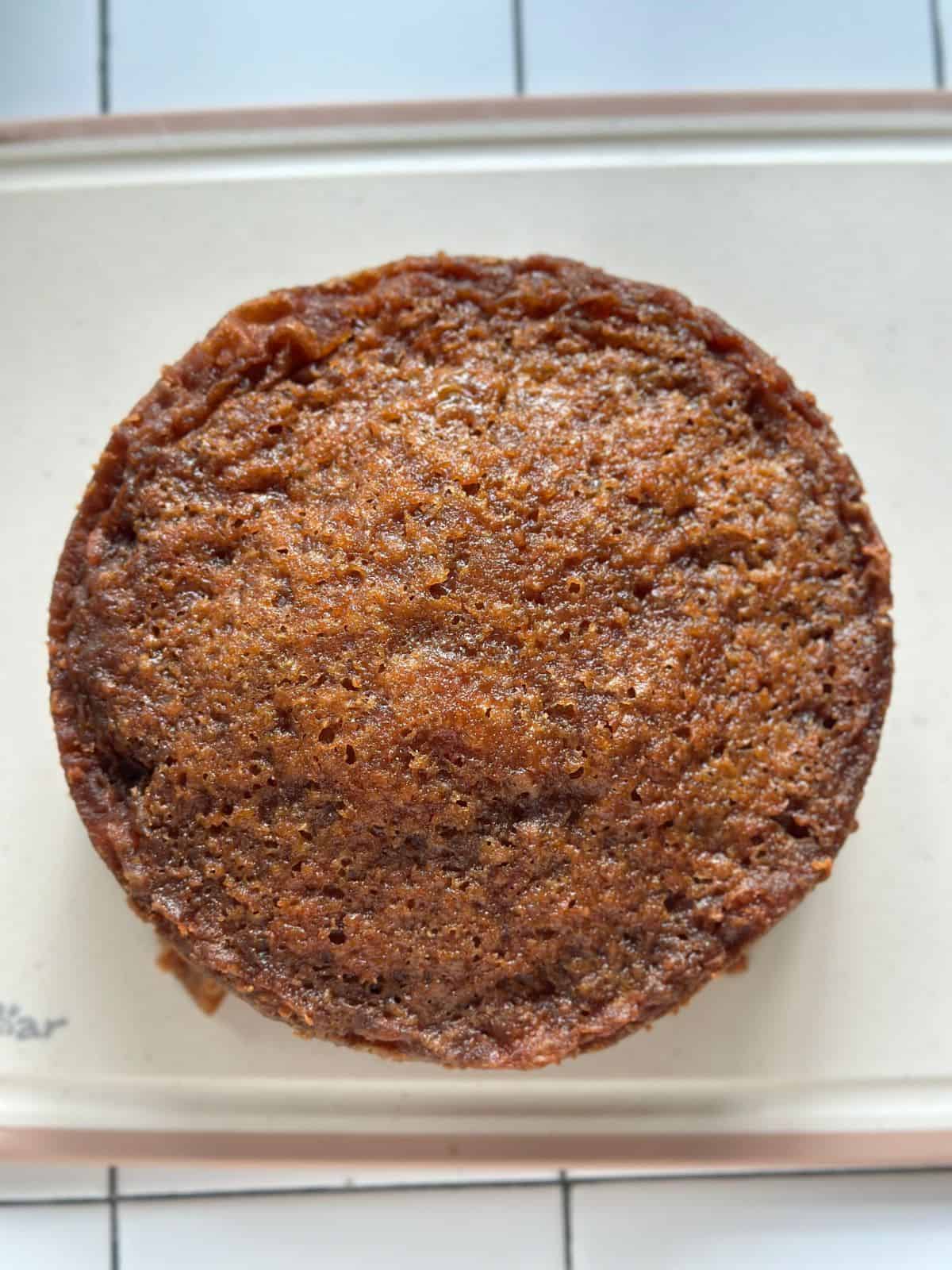

Helpful Tips
Bottom heat is key: For the first 45 minutes, make sure to focus on the oven’s bottom heat. You can cover the cake with aluminum foil or even turn off the top heat to help it cook evenly.
Easy to Remove from the Pan: Grease the pan well before adding the batter. Once baked, allow the cake to cool completely—it will slide out effortlessly and won’t stick.
Enjoy with Coconut Sauce: Savor this honeycomb cake on its own, or take it to the next level by pairing it with Vietnamese sweet coconut sauce (Nước Cốt Dừa) for extra flavor.
More Tasty Vietnamese Desserts

Vietnamese Palm Sugar Honeycomb Cake (Bánh Bò Thốt Nốt)
Equipment
- 1 round baking pan (7-8 inch diameter or 18-20 cm)
Ingredients
I highly recommend using a kitchen scale to measure.
- 3 large eggs (Size L: 2 oz or 55-60 g)
- 140 g tapioca starch
- 10 g all-purpose flour (or rice flour or tapioca starch)
- 240 g coconut milk (full-fat)
- 5 g coconut oil (or melted butter) (about 1 tsp)
- 180 g palm sugar
- 4 g baking powder (double-acting or single-acting) (almost 1 tsp)
- 2 g baking soda (almost ½ tsp)
- ½ tsp salt
- Cooking oil (for greasing the pan)
Instructions
- Lightly beat the eggs with a fork in a bowl.
- Combine the palm sugar, salt, and coconut milk in a pot. Heat gently, stirring until everything is well-mixed and you begin to see steam rising.
- Gradually pour the warm coconut milk mixture into the eggs while whisking continuously. This step helps reduce any eggy smell. Let the mixture cool for about 15 minutes.
- Set your oven to 340°F (170°C), without the fan. Turn off the top heat if your oven allows. Preheat the oven for 15-20 minutes.
- Add tapioca starch and all-purpose flour to the cooled egg mixture, then whisk until smooth. Strain the batter through a sieve for a lump-free texture.
- Mix in the baking powder and baking soda, then strain the batter again. Stir in the coconut oil.
- Add coconut oil, mix well until combine.
- Thoroughly grease your baking mold with cooking oil, then pour in the batter. If your oven doesn’t allow the top heat to be turned off, cover the mold with aluminum foil.
- Place the mold in the oven immediately:– Bake at 340°F (170°C) for 15 minutes– .Lower the temperature to 265°F (130°C) and bake for another 30 minutes.– Remove the aluminum foil (or turn on the top heat) and bake for an additional 15 minutes until fully cooked.



